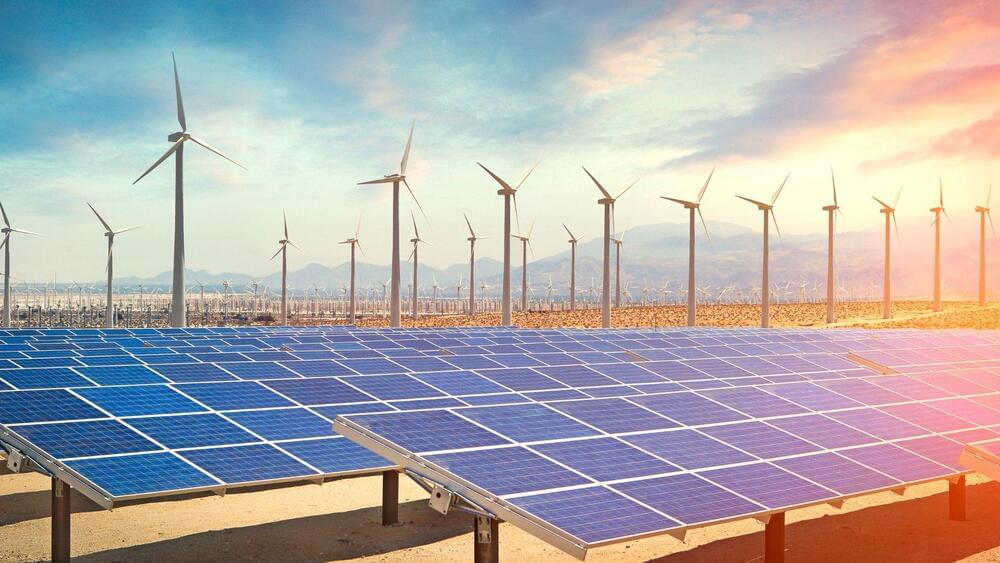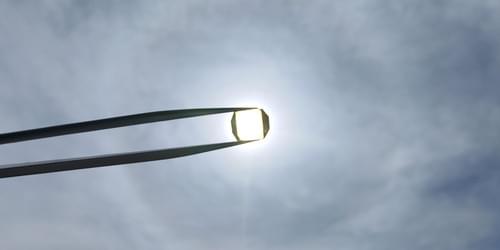Technology to produce, convert and store energy is central to these researchers’ efforts.



The event will take place in a man-made city with a year-round winter sports complex. Can you make snow in the desert? It seems you can, as Saudi Arabia will be hosting the 2029 Asian Winter Games, according to a report published by the South China Morning Post on Tuesday.
Saudi Arabia plans to build the world’s largest buildings as part of its $500 billion development plan called NEOM, as the country looks to steer away from its heavy dependence on oil, Bloomberg reported.
At 10.8 million barrels a day, Saudi Arabia contributes 11 percent of the global oil production and is the largest exporter of crude oil. As the world looks towards a future that is powered by cleaner sources of energy, Saudi Arabia wants to diversify its income sources and has been looking at building destinations where it can attract industries and businesses in the future.

The project will take 7–8 years. An 853-mile-long (1,373 km) undersea electricity cable connecting Egypt with Europe has been touted to help Europe’s impending energy crisis amidst Russia’s war with Ukraine.
Greece is in embarking on one of Europe’s most ambitious energy projects by linking up its electricity grid with Egypt’s.
An underwater cable will carry 3,000 MW of electricity — enough to power up to 450,000 households — and will run from northern Egypt directly to Attica in Greece.
The project is being undertaken by the Copelouzos Group, whose management met last week with the Egyptian leaders to speed up the process.

Aeromine says its unique “motionless” rooftop wind generators deliver up to 50% more energy than a solar array of the same price, while taking up just 10% of the roof space and operating more or less silently. In independent tests, they seem legit.
Distributed energy generation stands to play a growing part in the world’s energy markets. Most of this currently comes in the form of rooftop solar, but in certain areas, wind could definitely play a bigger part. Not every spot is appropriate for a bladed wind turbine, though, and in this regard, University of Houston spinoff Aeromine Technologies has designed a very different, very tidy form of rooftop wind energy capture that looks like it could be a real game-changer.
As with traditional wind turbines, size is key. So while Aeromine’s wind energy boxes take up a relatively small footprint on your roof, they’re still pretty bulky. The wings themselves are maybe 10 feet (3 m) high, at a rough guess, and looking at the latest imagery they’re now sitting on top of boxes that might add another 6 ft (1.8 m) or more to their height – so they’re no shrinking violets. On the other hand, they don’t create the noise, or the constantly moving visual distraction of a regular, bladed turbine, so they may prove to be less unwelcome in populated areas.
Thanks to a $19.2 million collaboration co-funded by the European Union.
Irish firm Ocean Energy has signed up to a collaboration project with 14 industry and university partners in the UK, Ireland, France, Germany, and Spain. The project will test its OE35 floating wave energy device at scale over the next four years.
The new €19.6 million ($19.
Source: Ocean Energy / YouTube.
Ocean Energy develops wave energy technology to harness the power of the ocean for renewable energy in a bid to improve the security of energy supplies and also to help ease the energy transition.

Researchers have demonstrated a quantum sensor that can power itself using sunlight and an ambient magnetic field, an achievement that could help reduce the energy costs of this energy-hungry technology.
No longer the realm of science fiction, quantum sensors are today used in applications ranging from timekeeping and gravitational-wave detection to nanoscale magnetometry [1]. When making new quantum sensors, most researchers focus on creating devices that are as precise as possible, which typically requires using advanced—energy-hungry—technologies. This high energy consumption can be problematic for sensors designed for use in remote locations on Earth, in space, or in Internet-of-Things sensors that are not connected to mains electricity. To reduce the reliance of quantum sensors on external energy sources, Yunbin Zhu of the University of Science and Technology of China and colleagues now demonstrate a quantum sensor that directly exploits renewable energy sources to get the energy it needs to operate [2].

Data from the Parker Solar Probe confirms a long-suspected heat source for the Sun’s surprisingly hot corona, but there may be others.
The Sun’s surface temperature is around six thousand degrees kelvin, but the solar atmosphere—the corona and the solar wind—can reach a million degrees kelvin, a long-standing mystery in solar physics. Now, with data from the Parker Solar Probe, researchers have found evidence supporting a partial explanation for this mystery: magnetic waves driven by subsurface turbulence can impart energy to ions in these regions [1].
The exact mechanism of heating has been debated for decades, but the story appears to start with turbulent flow in the Sun’s convection zone, the outermost layer below the surface. In fluid dynamics, turbulence causes heating through a process known as turbulent energy cascade, where large eddies are converted into progressively smaller eddies. The energy in the smallest eddies is converted into heat through collisions between molecules.

O.o!!!
The ocean covers most of our planet’s surface, accounts for the majority of our oxygen production, and provides a significant amount of resources by way of food, minerals, and energy.
Yet our oceans are shockingly underrepresented when it comes to environmental conventions on an international scale.
The deep blue yonder is often reduced to footnotes and passing mentions in international accords that aim to unite our world in sustainable practices.

If you often find yourself off by one when counting your socks after doing the laundry, you might want to sit down for this.
Scientists in Japan have now counted the number of extra—or missing— charges down to a precision of just one electron in single platinum nanoparticles having diameters only one-tenth those of common viruses.
This new process for precisely studying differences in net charge on metal nanoparticles will aid in the further understanding and development of catalysts for breaking down greenhouse and other harmful gases into fuels and benign gases or for efficiently producing ammonia needed for fertilizers used in agriculture.